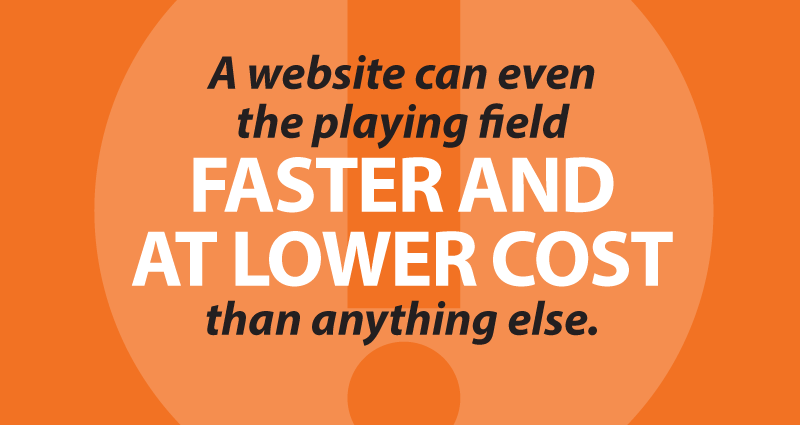
Five ways a lame website bleeds members and money
When a credit union is considering a shiny new website with all the bells and whistles, they’re naturally concerned about what it’s going to cost.*
Sure, you have to be careful with your members’ money, but it’s also important to factor in what that lame old website might be costing you every day:
1. A lame website actively damages your brand
Your website and your brand are inseparable, permanently intertwined. It’s the most visible, public outpost of your brand. It’s active, interactive, and available on any screen anywhere, any time. So websites have become one of the most important factors in shaping brands.
For example, prospective members of all ages are using your website for “due diligence” – they want to find out what it’s like to do business with you. Does your website say “out of touch”, “old fashioned”, “small”, “limited”, “hiding things” or even “shady”? Or does it say “up-to-date”, “easy” and “trustworthy”?
Websites are also intertwined with service quality and the member experience. If a member has questions, can they find answers easily? Does the website work just as well on a phone? If someone can’t see very well, can they still use your website?
2. You look like you are stuck in 2009
The best websites lead the way for everything else. Instead of playing catch-up, you can set a new standard for everything else the credit union does for the next several years. You’re translating your mission and strategy into tangible, visible action. It’s also a great way to get everyone on board and pulling the same direction.
And the good news is that a website can even the playing field faster and at lower cost than anything else. In terms of brand impact, it’s a screaming slam-dunk bargain.
One of our favorite things to hear is “Can we make everything else as cool as the new website?”
Why yes. Yes we can.
3. Missed marketing opportunities
This is more behind the scenes, but a lame website can also mean you’re missing out on opportunities to better understand your members’ needs and improve your marketing.
Tracking and analytics are the basics, but do you also have the ability to quickly and easily experiment and try new things? If you’d like to test a new CRM, can you plug it right in and see what happens? Can you do A/B testing and smoothly integrate landing pages with your email, Facebook, and Adwords marketing?
And if you’re doing Adwords, Facebook Ads, promoted posts, etc. is your website able to back up the promises the ads make?
4. Overcomplicated is over
One hallmark of a lame website is complex, jumbled navigation and a home page that looks like a tornado hit Times Square.
The biggest recent shift in the state of the art for credit union website design is simplicity. Less is more. Easier is better than harder.
It’s not easy to pull off – you have to get rid of a lot of nonessentials – but you have to focus ruthlessly on the top five or six things members and prospective members need to find and know.
Your website is a tool, and the best tools are fast and easy to use.
5. The ability to adapt and evolve
If your lame website is stuck with a dead-end, hard to use CMS, or you can’t easily change your site’s look or rearrange the content or page templates, you’ve lost the ability to adapt and evolve.
One of the main reasons we use WordPress to build new sites is that future adaptation is much easier. It’s a versatile, robust platform with tons of abilities that can be added as needed. For example, if you fire up a new community engagement program, you could add an event management plugin to help coordinate the picnics. If you want to get closer to your Spanish-speaking members, you can add bilingual capabilities to your site.
You also gain the ability to fine-tune on a daily basis, and even experiment – you can track internal searches and clicks, and use this information to prune and fine-tune.
Isn’t it time to give a new website a much higher priority in order to stop bleeding members and money?
*(In case you’re wondering, the answer is usually in the same ballpark as the average new car. The exact tab depends on the options, of course.)
- CU Numbers Need Marketing Love, Too - April 2, 2024
- Will it blend? The only CU fintech question that matters. - February 13, 2024
- Solving the CU marketing “now what?” problem - January 16, 2024
